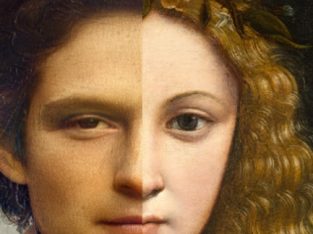How much do you know about St Andrew?
St Andrew’s Day (or more usually Night) is very important to all Scots around the world as it is when we celebrate Saint Andrew, Scotland’s patron saint. But how much do you know about him? Here’s a potted history:
Andrew was a Galilean fisherman before he and his brother Simon Peter became disciples of Jesus Christ. He was crucified by the Romans on an X-shaped cross at Patras in Greece and, hundreds of years later, his remains were moved to Constantinople and then, in the 13th century, to Amalfi in southern Italy where they are kept to this day. Legend has it that a Greek monk known as St Rule or St Regulus was ordered in a vision to take a few relics of Andrew to the ‘ends of the earth’ for safe keeping. He set off on a sea journey to eventually come ashore on the coast of Fife at a settlement which is now the modern town of St Andrews.
In 832 AD Andrew is said to have appeared in a vision to a Pictish king the night before a battle against the Northumbrians in what is now the village of Athelstaneford in East Lothian. On the day of the battle a Saltire, an X-shaped cross, appeared in the sky above the battlefield and the Picts were victorious. The Saltire, or Saint Andrew’s Cross, was subsequently adopted as the national emblem and flag of the Scots. Andrew was first recognised as an official patron saint of Scotland in 1320 at the signing of the Declaration of Arbroath, an appeal to the Pope by Scottish noblemen asserting Scotland’s independence from England.
The presence of Andrew’s relics in Scotland – a tooth, a kneecap, arm and finger bones – meant that St Andrews became a popular medieval pilgrimage site although they were destroyed in the 16th century during the Scottish Reformation. In 1879 the Archbishop of Amalfi gifted Andrew’s shoulder blade to St Mary’s Cathedral in Edinburgh. Pope Paul VI donated further relics in 1969. Andrew is also the patron saint of Greece, Russia, Romania, and Barbados. Remnants of the cross he was crucified on remain in the St Andrew’s Cathedral Patras in Greece. Saint Andrew was the first bishop there and then crucified by the Romans. His patronage extends to fishmongers, those suffering from gout, singers, sore throats, spinsters, maidens, old maids and women wishing to become mothers.
So whether you are a fishmonger, a singer or a spinster, whether you are suffering from gout or a sore throat, or whether you are an old maid or some other woman just wanting to get pregnant, come and join us at our St Andrew’s Night Dinner Dance on Saturday, 21 November. For more details, contact j.murphy@buroservice.com
Article by John Murphy of The Informer and Buroservice
Easy Milano
Easy Milano is the online publication for the international community of Milan. We offer practical tips, key information and essential insights about living and working in Italy. Easy Milano has been assisting English speaking expats in Milan since 1999.
Follow us on Facebook - Instagram - Newsletter
You must be logged in to post a comment.



